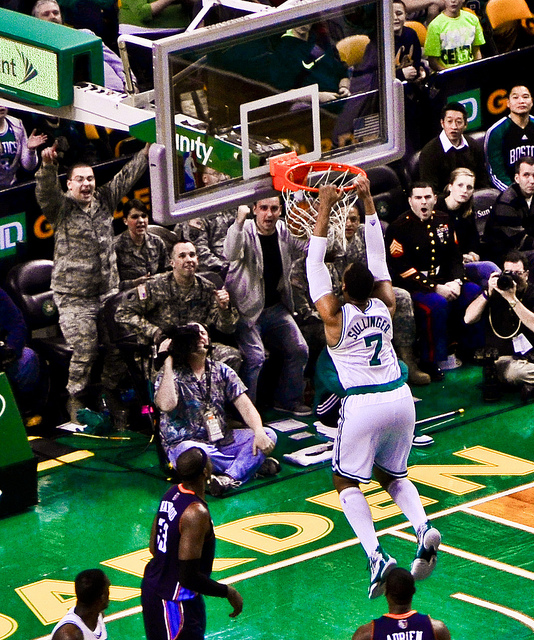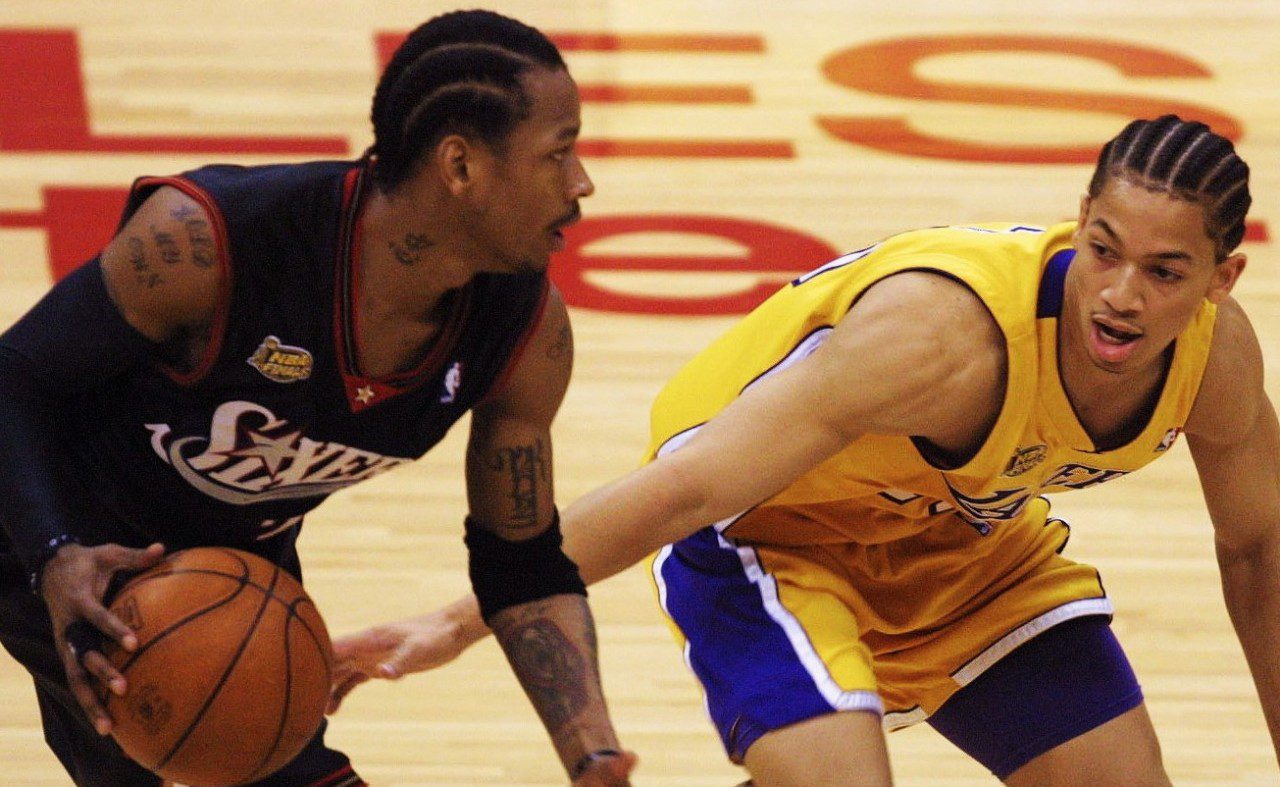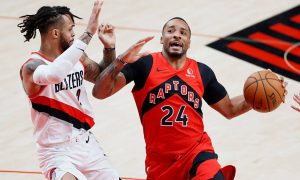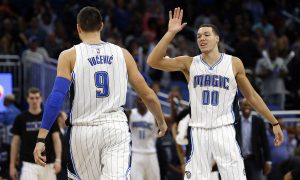
Image courtesy of hangdynasty/Flickr.
It hasn’t been a winning year for the Boston Celtics. The team struggled out of the gate with four consecutive losses to start the season, and after briefly flirting with playoff contention in December, the C’s have come crashing back to earth in January. Boston has only one win in its last 11 games and is currently on a nine-game skid. So far, the club is winless in 2014 and sits 12th in the Eastern Conference standings. Despite these gloomy metrics, though, the season has not been a waste, or even particularly glum in character. Boston’s record is chock-full of hard-fought losses interspersed with gutty and surprising victories, and as a team, they have been both entertaining and competitive. Moreover, the franchise’s player development goals—of prime importance during a rebuilding year—have progressed tangibly and ahead of schedule.
Perhaps the brightest spot in Boston’s lineup has been Jared Sullinger, the second-year forward out of Ohio State who slipped to the Cs in the 2012 NBA Draft after lingering back issues caused his draft stock to plummet. Sullinger put together a solid if injury-plagued rookie campaign last year, averaging 6 points and 6 rebounds over 45 games while showing impressive heart and guile in the post.
This season he has responded well to an increased workload, starting roughly two-thirds of Boston’s games and improving his averages to 13 points and 7.5 rebounds per game. His field-goal percentage has dipped appreciably from 49 percent to 45, concerning territory for a big man, but part of this slide can be attributed to Sullinger’s newfound proclivity for outside shots. After adding the three-ball to his arsenal over the summer, Sullinger has not been bashful about launching them: he shoots an average of 2.5 triples per game and they account for 21 percent of his total shots from the field. He clearly has a green light from coach Brad Stevens, too, because despite shooting below 30 percent from three-point range on the season, he fires away without a second thought.
Taken as a whole, Sullinger’s sophomore season so far signals a promising upward trend: his per-36 numbers are up, he’s competing effectively against starter-quality opposition, and he’s continued to rebound well in spite of his lack of height or leaping ability.
But, since the Celtics went into a tailspin, Sullinger’s performance has mirrored the team’s. His shooting percentage for January is in the 20s, he recently lost his starting spot to Kris Humphries, and most concerning of all, he cannot seem to stop committing flagrant fouls: he has five to his name through 37 games, more than any other player in the league, and three of them have come in the last two weeks. This could be coincidence, or it could be indicative of rising frustration on his part.
Like many NBA players, Sullinger is a career winner who has experienced far more success than failure on the basketball court. This is only his second year in the league, and after years as a dominant force in high school and college basketball, Jared is finally a key cog on team that is, in spite of his best efforts, struggling to win games.
Boston fans subscribing to the “mediocrity is death” psychology might prefer this outcome. Since the talent under contract right now is insufficient to win a title, the logic goes, better to punt on the year and acquire a high draft pick. This would kick-start the rebuilding process and make a title run plausible in the future. This strategy is fine for spectators, as they ultimately invest very little in any given season and can disengage at any time.
But for players, endless losing takes its toll, and for Sullinger it is a new and difficult situation, the indignity of which is compounded by the idea of Boston having designed this roster to fail.
When a reporter mentioned “tanking” at the outset of the season, Sullinger bristled, saying, “y’all might as well throw that out the door … we just want to win and show everybody they can kiss our butts about that tanking stuff.” Now, as losses pile up, the frustration he felt in November has undoubtedly magnified. When your best proves not to be good enough, swallowing that reality becomes a harder and harder task each time you’re confronted with it.
It may very well be that Sullinger’s recent on-court woes are tied to his psychological distress. On Monday against the Houston Rockets he was a game competitor, pulling down six offensive rebounds and working feverishly under the hoop to score. But as Houston’s lead ballooned in the third quarter, the bewilderment and dissatisfaction were evident on his face.
Whether it’s the mental burden of the season exacting its toll on Sullinger, a combination of physical ailments, or a regression caused by increased scouting attention, one thing is for certain: he’s shooting himself in the foot with his recent performance. The narrative arc of his young career is hanging in the balance, and his ability to turn around this dismal stretch will determine whether Sullinger is viewed as a prized asset this offseason or just another middling prospect trying to carve out a career. He’s given us reason to be optimistic, but with such a small sample size, the implications of his performance over the next few months are serious, particularly with an unsentimental (and trade-happy) GM like Danny Ainge at the helm.
As we near the All-Star break and the pieces of the season start to click into place, it’s up to Sullinger to prove he’s more than what he’s shown over the last 15 games. This means thriving even when the team struggles to win, because tanking or not, the NBA values production. Jared’s progress in this respect will be one of the most interesting subplots to watch over the course of the remaining year in Boston.

















